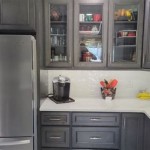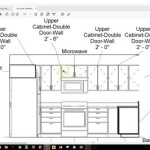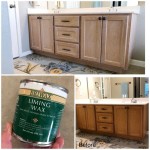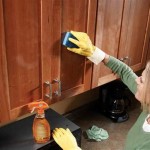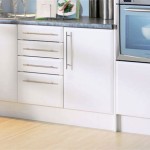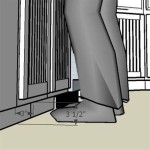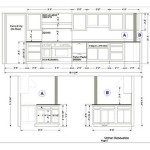Kitchen Cabinet Patterns: A Comprehensive Guide
Kitchen cabinets are more than mere storage spaces; they are a fundamental design element that significantly impacts the overall aesthetic and functionality of a kitchen. Selecting the appropriate kitchen cabinet pattern involves considering various factors, including the kitchen's style, the homeowner's preferences, and the desired level of visual interest. Understanding the different patterns available is crucial for achieving a cohesive and visually appealing kitchen design.
This article explores several key kitchen cabinet patterns, outlining their characteristics, advantages, and ideal application scenarios. Furthermore, aspects such as material considerations and hardware choices that complement specific patterns will be discussed. The objective is to provide a clear and informative resource for homeowners, designers, and contractors navigating the selection process for kitchen cabinets.
Understanding Door Styles and Construction
The pattern of a kitchen cabinet is primarily defined by the door style. This style encompasses the shape, detailing, and construction of the cabinet door, influencing the overall look and feel of the kitchen. Cabinet door styles are typically categorized based on the panel construction and the presence or absence of decorative elements.
One common classification divides doors into two categories: inset and overlay. Inset doors fit flush within the cabinet frame, creating a clean, streamlined appearance. This style often conveys a sense of sophistication and traditional craftsmanship. Overlay doors, on the other hand, sit on top of the cabinet frame, offering a more contemporary and sometimes more affordable option. Overlay doors can be either full overlay, covering the entire frame, or partial overlay, leaving a portion of the frame visible.
Beyond the inset/overlay distinction, cabinet doors are further differentiated by their panel design. The panel is the central part of the door, and its style profoundly affects the perceived pattern. Common panel styles include raised panel, recessed panel, slab panel, and glass panel, each contributing a unique visual texture and character to the kitchen.
The construction method also plays a critical role. Five-piece doors, common in many styles, consist of a center panel surrounded by four frame pieces (stiles and rails). Solid slab doors, conversely, consist of a single piece of material, offering a minimalist aesthetic.
Exploring Common Kitchen Cabinet Patterns
Several established kitchen cabinet patterns are widely used, each offering a distinct aesthetic. Examining these patterns provides a foundation for informed decision-making during the design process.
Shaker Cabinets: Shaker cabinets are characterized by their simplicity and clean lines. They typically feature a five-piece door construction with a recessed panel and minimal ornamentation. Shaker cabinets are incredibly versatile, fitting well in both traditional and contemporary kitchens. Their simplicity allows them to be easily customized with varying paint colors, hardware choices, and countertop materials. The lack of elaborate detailing makes them easy to clean and maintain. Shaker cabinets are often constructed from solid wood or MDF with a wood veneer.
Raised Panel Cabinets: Raised panel cabinets offer a more traditional and ornate look. The center panel is raised above the surrounding frame, creating a dimensional and visually rich surface. Raised panel cabinets are often associated with classic and formal kitchen designs. The level of detailing can vary significantly, ranging from simple raised panels to more elaborate designs with intricate carvings. Woods like cherry, maple, and oak are commonly used for raised panel cabinets, often stained to highlight the wood grain.
Slab Cabinets: Slab cabinets are the embodiment of minimalist design. They consist of a single, flat panel, often made from wood, laminate, or a composite material. Slab cabinets are ideal for contemporary and modern kitchens, where clean lines and a sleek aesthetic are desired. They are easy to clean and maintain due to their smooth surface. Slab cabinets are frequently paired with minimalist hardware or push-to-open mechanisms to further enhance their streamlined appearance.
Glass-Front Cabinets: Glass-front cabinets add visual interest and depth to a kitchen. They feature glass panels in place of solid panels, allowing the display of dishware, glassware, or decorative items. Glass-front cabinets can be used strategically to break up long stretches of solid cabinetry and create a focal point. Different types of glass, such as clear, frosted, or textured glass, can be used to achieve various effects. Glass-front cabinets are often incorporated into upper cabinets to showcase decorative items and create a sense of openness.
Beadboard Cabinets: Beadboard cabinets feature vertical grooves or ridges that run along the surface of the door. This pattern adds texture and visual interest, evoking a farmhouse or cottage style. Beadboard cabinets are often painted in light colors, such as white or cream, to enhance their rustic charm. They can be used in both upper and lower cabinets to create a cohesive and inviting kitchen space.
Louvered Cabinets: Louvered cabinets feature horizontal slats, similar to those found in shutters. This pattern offers a unique visual texture and can be used to add a touch of architectural interest to a kitchen. Louvered cabinets are often used in pantry doors or island cabinets to provide ventilation. They can be painted or stained to match the overall kitchen design.
Material Considerations and Hardware Choices
The choice of material significantly impacts the appearance, durability, and cost of kitchen cabinets. Different materials lend themselves to different patterns and styles. Solid wood is a classic choice, offering natural beauty and durability. However, solid wood cabinets can be more expensive and require proper maintenance to prevent warping or cracking. MDF (medium-density fiberboard) is a more affordable alternative that is less prone to warping and provides a smooth surface for painting. Plywood is another option, offering good strength and stability.
The hardware chosen also plays a crucial role in complementing the cabinet pattern and overall kitchen design. Knobs and pulls serve a functional purpose but also contribute to the aesthetic appeal. For Shaker cabinets, simple and understated hardware, such as brushed nickel knobs or pulls, is often preferred. Raised panel cabinets may benefit from more ornate hardware, such as antique brass knobs or decorative pulls. Slab cabinets typically pair well with sleek and minimalist hardware, such as stainless steel bar pulls or push-to-open mechanisms. The finish of the hardware should also be considered in relation to the cabinet color and overall kitchen design.
When selecting hardware, it is essential to consider both functionality and aesthetics. The size and shape of the hardware should be comfortable to grip and use. The placement of the hardware should also be carefully considered to ensure proper ergonomics and visual balance. Consistency in hardware style throughout the kitchen can create a cohesive and unified look.
Beyond knobs and pulls, other hardware elements, such as hinges and drawer slides, also contribute to the overall functionality and quality of the cabinets. Soft-close hinges and drawer slides provide smooth and quiet operation, enhancing the user experience. High-quality hardware can significantly improve the longevity and performance of kitchen cabinets.
The selection of kitchen cabinet patterns is a multifaceted process that requires careful consideration of various factors. Understanding the different door styles, panel designs, and material options is crucial for achieving a cohesive and visually appealing kitchen design. By carefully considering these aspects, homeowners can create a kitchen that reflects their personal style and meets their functional needs.

Kitchen Wardrobe Cabinet Ideas For Your Home Designcafe

Sweeten Kitchen Remodels Featuring Stylish Patterns
55 Modern Kitchen Cabinet Ideas And Designs Renoguide N Renovation Inspiration

House Home 70 Kitchens That Make A Case For Color

Creative Kitchen Cabinets For A Stylish

35 Kitchen Cabinet Designs That Will Blow Your Mind

Modern Kitchen Cabinets For A Posh And Sleek Finish

15 Stunning Kitchen Cabinet Designs In Singapore With 5 Essential Tips

Fabulous Kitchen Cabinets Colours And Styles In 2024

Sweeten Kitchen Remodels Featuring Stylish Patterns
Related Posts

